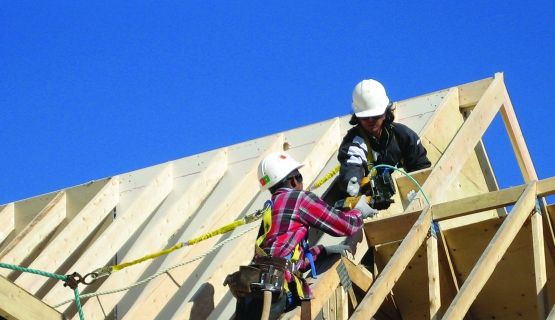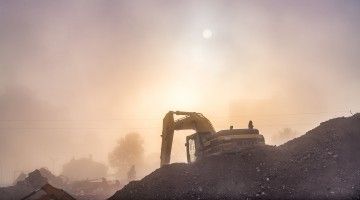Construction sector
IWH research that specifically involves construction workplaces, workers, unions, employers and/or associations, as well as research on programs that specifically target the construction sector, is collected together here. Not included is IWH research that cuts across all or many sectors, even though it may be relevant to the construction sector. For this reason, visitors are encouraged to explore beyond this page to find equally important information on the prevention of work injury and disability in construction.
Featured

Impact case study
IWH evaluation of the effectiveness of the Ontario working-at-heights training standard
An IWH study on the effectiveness of Ontario's mandatory training was valuable to the labour ministry in several ways—including in reinforcing the value of program evaluations.
Published: November 21, 2023

At Work article
Safer work practices, lower injury rates maintained two years after Ontario’s working-at-heights training came into effect: study
In 2015, the Ontario government implemented a working-at-heights (WAH) training standard to ramp up fall prevention efforts. An IWH study team has now gathered two additional years of data on the effectiveness of this training requirement—both on work practices and injury rates.
Published: November 3, 2023

At Work article
Union firms have lower lost-time claim rates, study in ICI construction confirms
Five years ago, an IWH study found lower lost-time injury claim rates in unionized firms in Ontario's industrial, commercial and institutional construction sector. A new study uses more recent data to see if it can replicate the observed "union safety effect."
Published: January 2021
Project report
Project report
Updating a study on the union effect on safety in the ICI construction sector
IWH updated a previous study on the union safety effect in Ontario's industrial, commercial and institutional construction sector. Like the first study, the update found unionization was associated with a lower risk of injuries requiring time away from work, including both musculoskeletal and critical (more severe) injuries.
Published: January 2021
IWH Speaker Series
IWH Speaker Series
The union effect on safety in the ICI construction sector: a study update
A study conducted several years ago by the Institute for Work & Health found unionized companies in Ontario's institutional, commercial and industrial (ICI) construction sector had a lower rate of lost-time injury claims than their non-unionized counterparts, after accounting for other factors like company size. In this presentation, Dr. Lynda Robson shares an update of that study, using data from 2012-2018. She discusses whether the latest results support what's called a "union safety effect", and how findings vary by company size and types of construction work.
Published: January 2021

Research Highlights
Evaluating the effectiveness of mandatory working-at-heights training standards
The introduction of a mandatory training standard for construction workers using fall protection equipment is associated with a 19.6 per cent reduction in the incidence rate of lost-time claims due to falls targeted by the intervention. This decline is larger than an overall decline in injuries in the sector during the same time frame. Reductions in incidence rates are also largest among the smallest employers.
Published: September 2020
Journal article
Journal article
Preventing fall-from-height injuries in construction: effectiveness of a regulatory training standard
Published: Journal of Safety Research, September 2020

At Work article
Comparing the costs, benefits of silica dust prevention methods for construction workers
Construction workplaces can use different methods to reduce exposure to silica dust and protect workers from cancer down the road. But which methods should they opt for? A cost-benefit analysis led by IWH offers some guidance.
Published: August 2020
Journal article
Journal article
A probabilistic approach for economic evaluation of occupational health and safety interventions: a case study of silica exposure reduction interventions in the construction sector
Published: BMC Public Health, February 2020
Journal article
Journal article
Utilizing construction safety leading and lagging indicators to measure project safety performance: a case study
Published: Safety Science, December 2019

At Work article
Employers certified by COR programs have greater reduction in injury rates: studies
Although COR programs are offered in most provinces and territories across the country, little research has been done on their effectiveness. A research program recently examined workers' compensation data in B.C. and Alberta for links between certification and injury rates.
Published: November 2019
IWH Speaker Series
IWH Speaker Series
The effectiveness of COR in preventing work injury: lessons from Alberta and B.C.
Certificate of Recognition (COR) programs are voluntary audits that recognize employers for having strong occupational health and safety (OHS) practices. In this presentation, IWH Scientist Dr. Chris McLeod shares his research in British Columbia and Alberta on the effectiveness of COR programs in preventing work-related injury.
Published: November 2019